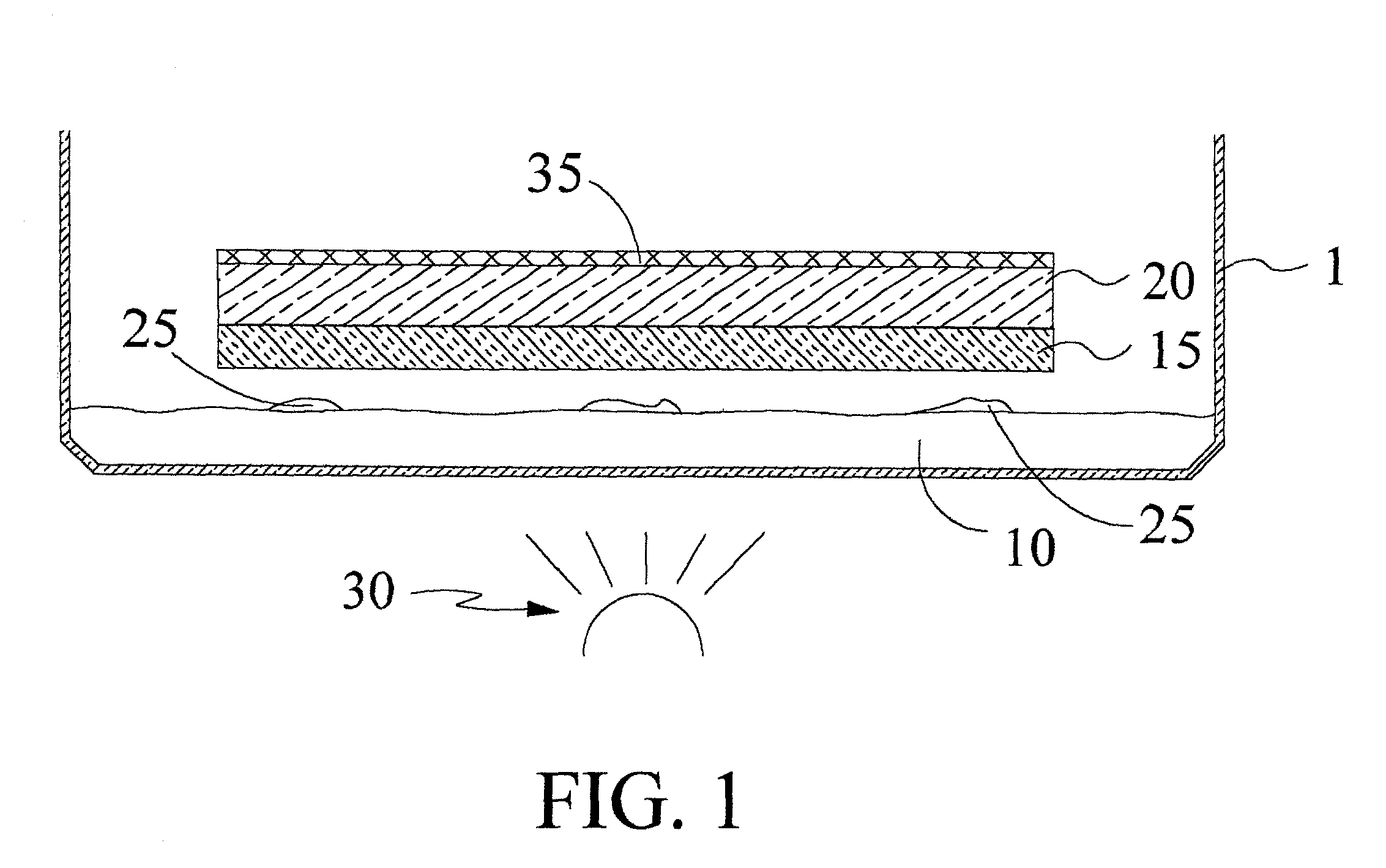Apparatus for rapid biohydrogen phenotypic screening of microorganisms using a chemochromic sensor
a technology of biohydrogen phenotypic screening and chemochromic sensor, which is applied in the direction of biomass after-treatment, analysis using chemical indicators, instruments, etc., can solve the problems of limiting the commercial application of this process, and affecting the phenotypic screening rate of microorganisms
- Summary
- Abstract
- Description
- Claims
- Application Information
AI Technical Summary
Problems solved by technology
Method used
Image
Examples
Embodiment Construction
[0034] Wild type C. reinhardtii (WT) was obtained from the University of Colorado at Boulder and a cell-wall-less strain of C. reinhardtii (cw15) was obtained from the Chlamydomonas Genetics Center, Duke University. Algal cell suspensions were grown photoautotrophically either in Sager's minimal medium (WT), or in a modified Sueoka'a high salt medium, as described in Ghirardi et. al., Development of an Efficient Algal H.sub.2-Producing System, Proceedings of the 1996 U.S. DOE Hydrogen Program Review, Vol. 1, 285-302, (1997). Suspension cultures were grown under illumination at 25.degree. C., using cool white fluorescent lights (8W / m.sup.2), and agitated with a bubble mixture of 1.7% CO.sub.2 in air. Plated colonies were prepared by centrifugation harvesting of cell suspensions at 2000 g, for 10 minutes, and inoculated on either 1.5% (WT), or 0.8% (cw15) agar gel in sterile plastic Petri dishes.
Mutageneses
[0035] In order to generate C. reinhardtii mutants to be used in the two select...
PUM
| Property | Measurement | Unit |
|---|---|---|
| pH | aaaaa | aaaaa |
| thickness | aaaaa | aaaaa |
| thick | aaaaa | aaaaa |
Abstract
Description
Claims
Application Information
 Login to View More
Login to View More - R&D
- Intellectual Property
- Life Sciences
- Materials
- Tech Scout
- Unparalleled Data Quality
- Higher Quality Content
- 60% Fewer Hallucinations
Browse by: Latest US Patents, China's latest patents, Technical Efficacy Thesaurus, Application Domain, Technology Topic, Popular Technical Reports.
© 2025 PatSnap. All rights reserved.Legal|Privacy policy|Modern Slavery Act Transparency Statement|Sitemap|About US| Contact US: help@patsnap.com



